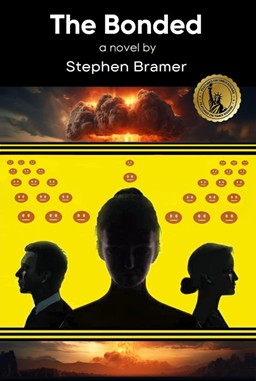Science fiction and thrillers are both high-wire acts. One leans on worldbuilding, futuristic science, strange societies, and alien rules, while the other thrives on relentless pacing and tension. Put them together, and you have a powerful genre mash-up. But there’s a catch: how do you share enough worldbuilding to ground the reader without stopping the story cold in its tracks? That’s where the dreaded info-dump often sneaks in.
So, how do you keep readers hooked while still weaving in the complexity a sci-fi thriller demands?
Show, Don’t Lecture
Instead of explaining your universe in blocks of exposition, reveal it through the eyes of your characters. Let the reader learn the rules of your world the same way your protagonist does, step by step, moment by moment. If the science matters, show it unfolding during a high-stakes chase. If society runs on strange laws, reveal them when your character accidentally breaks one. Readers remember what they experience, not what they’re told.
Use Dialogue as a Gateway
Dialogue is one of the most natural ways to sneak in context. A tense exchange between two characters can explain a world’s rules while advancing the plot and deepening relationships. But it should never sound like a lecture disguised as conversation. Keep it sharp, layered with conflict or hidden motives, so that the reader is drawn in by the drama while picking up the details almost by accident.
Breadcrumb the Details
Thrillers demand momentum, and momentum dies under the weight of pages-long exposition. The solution? Break worldbuilding into breadcrumbs. A single line of description here, a fleeting thought there. Let readers assemble the puzzle as they go, trusting them to connect the dots. This creates mystery and keeps them leaning forward, eager to discover what comes next.
Ground the Fantastic in the Familiar
One way to avoid overexplaining is to anchor sci-fi elements in emotions or experiences readers already know. A futuristic weapon isn’t just a device, it’s the fear in the hands of the person wielding it. A hive mind isn’t just a biological anomaly, it’s the suffocating loss of privacy, the terror of losing your own voice. By tying the extraordinary to the relatable, you allow readers to feel the stakes without needing paragraphs of technical explanation.
Trust the Reader
Perhaps the most important strategy is restraint. You don’t have to spell out every mechanism or history lesson. Readers of sci-fi thrillers are smart; they want to be challenged. Give them just enough to stay oriented, and let curiosity drive them deeper into the story.

Conclusion
Great sci-fi thrillers don’t weigh readers down with information they immerse them. By showing instead of telling, layering details through dialogue, sprinkling breadcrumbs, grounding the strange in the familiar, and trusting your reader’s intelligence, you can build a world that feels both vivid and unstoppable.
Stephen Bramer’s The Bonded is a masterclass in this balance. Instead of drowning readers in exposition, it pulls them into a chilling world of hive minds, hybrids, and reluctant investigators through tension, dialogue, and mystery. Every revelation comes at just the right moment when the stakes couldn’t be higher. The result? A sci-fi thriller you won’t be able to put down.
Grab your copy of The Bonded today, and experience how worldbuilding can keep you breathless, not bogged down.




